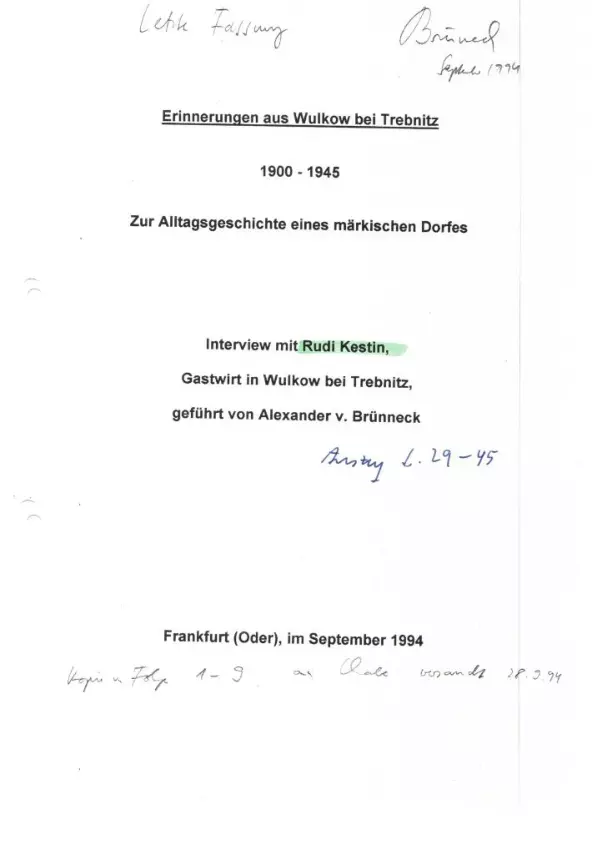
Forgetting and remembering after 1945
After the barracks had been dismantled, the camp and the alternative site were gradually forgotten. To this day, however, the irritating name "Judenloch" (lit.: jew hole) for the sand pit on the village outskirts (second camp location) has been used across generations of inhabitants. After 1990, research into the satellite camp finally began. Survivors and a number of school projects initiated examinations into the history of the satellite camp, resulting in increased visibility thanks to memorial stones and plaques.
Initially, the topic of the Wulkow satellite camp was not confronted by the villagers. The camp had vanished almost into thin air after the continuous dismantling, with only very few remnants still bearing witness to its existence. Nevertheless, the camp has remained in the collective memory of the villagers to this day, as shown by the continued use of the word "Judenloch" for the second location of the prisoner camp. During a peace march organised by the Young Pioneers and the Thälmann Pioneers from Kienitz to Berlin in May 1985, Wulkow was not mentioned in the discussion of "concentration camps". In May 1975, a memorial stone commemorating the liberation of the town and an unspecified "fascist concentration sub-camp" was placed in nearby Hermersdorf. This stone probably refers to the largely unknown Sachsenhausen satellite camp no. 4291 between Wulkow and Hermersdorf, the prisoners of which were also forced to work on the construction of the alternative site.
- © Private
Around 1995, the Wulkow satellite camp caught the public's attention. In spring 1994, Prof Dr Alexander von Brünneck from the University of Viadrina Frankfurt (Oder) conducted an initial interview with contemporary witness Rudolf Kestin (born 1931) from Wulkow about his memories and experiences. In early 1995, RAA e. V. Strausberg contacted former Wulkow prisoners in the Czech Republic and Sweden as part of a memorial project. In February 1995, pupils from Strausberg met survivor Jan Jecha at the Terezín memorial and then again in Wulkow in May. In November of the same year, several former Wulkow prisoners returned to Wulkow. As part of their visit, the memorial plaque at the Hermersdorf hostel and the two memorial stones were inaugurated. Meetings were also held between young people, the interested local population and the former Wulkow prisoners.
As part of a school project at Neuhardenberg Comprehensive School, a more intensive study of Wulkow was conducted in 1999. The pupils interviewed survivor Walter Grunwald from Sweden and made a film with their collected material. In the same year, pupils from Strausberg also spent several weeks researching the Wulkow satellite camp at the suggestion of survivor Jan Jecha. The result of this project was the memorial book "Von der Nummer zum Namen zurück" ("From numbers back to names"). In 2009, contemporary witness Rudolf Kestin from Wulkow was interviewed as part of the extracurricular youth history work programme "Zeitensprünge" (lit.: jumping between times). In the 2015/2016 school year, a pupil from Seelow Secondary School, who lived in Wulkow, wrote a paper on "The life of the Jewish prisoners in the Wulkow satellite camp with special consideration of the living conditions" for which she interviewed villagers who had been alive at the time.
The working group Wulkow 2021 has been able to use and build on all these studies and discussions.
- © RAA e. V.
- © Private

